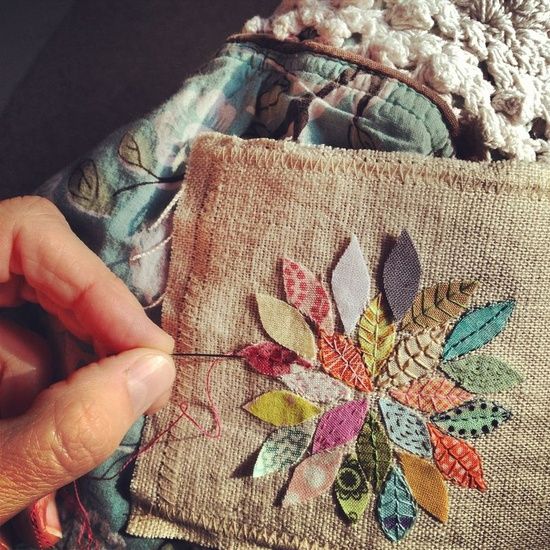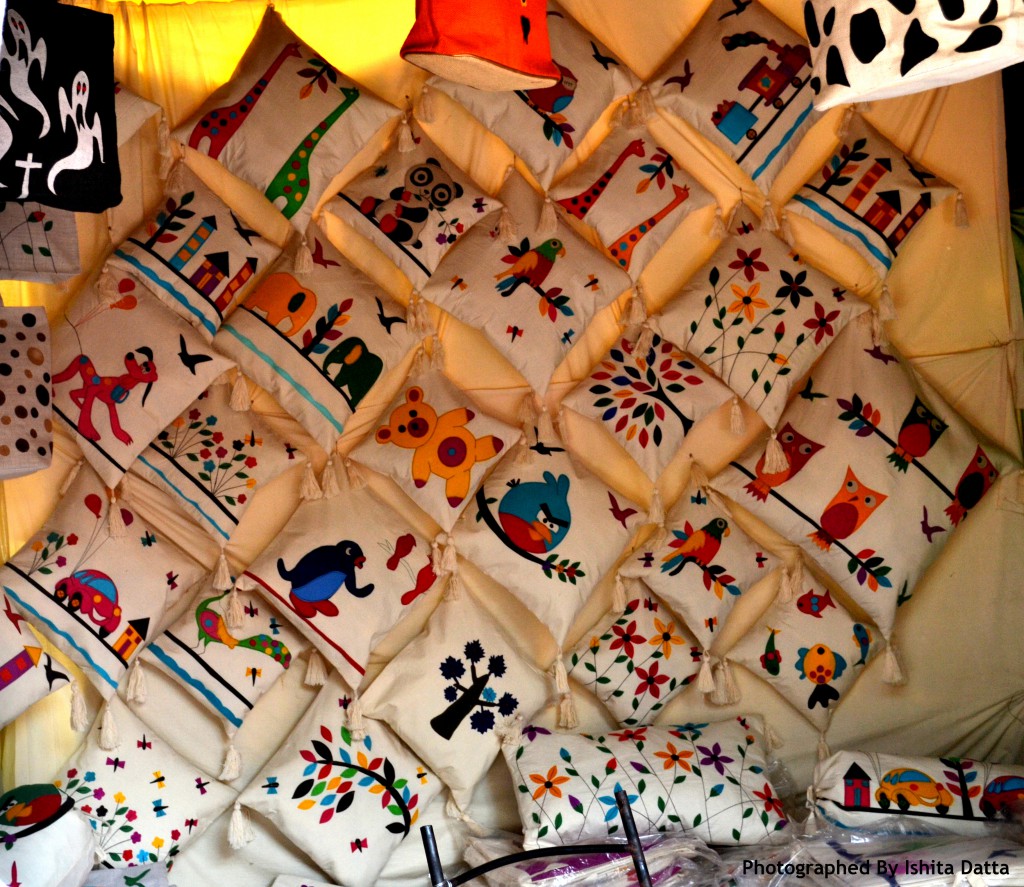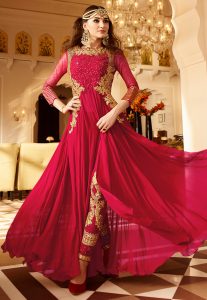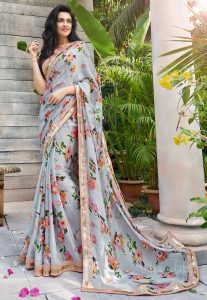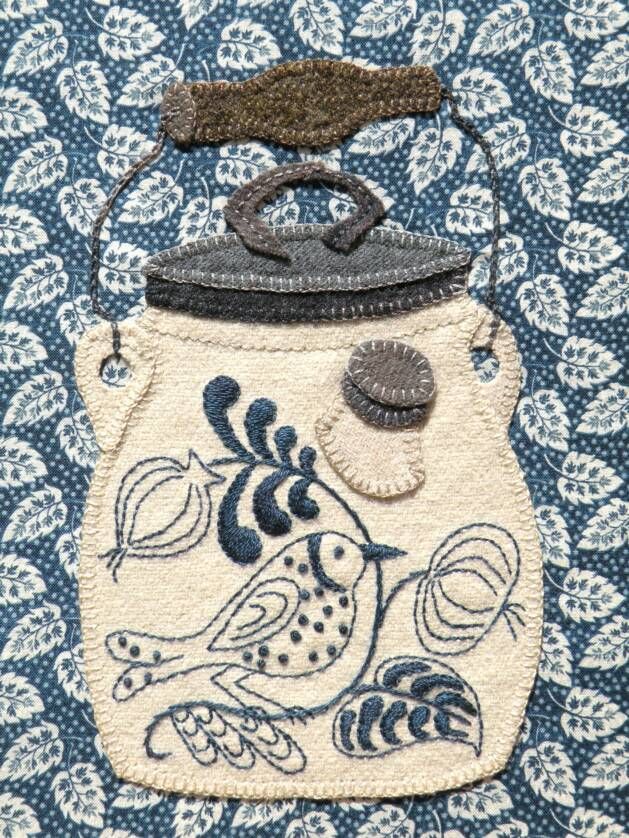
Applique Work
Applique is a type of embroidery that employs a smaller patch or fabric to be applied or sewed onto a larger fabric or surface. It is mostly one piece of fabric in its entirety. Applique derives its roots from French culture and it means ‘something applied’ or a thing that has been applied.
Origin and History
The history of Appliqué cannot be pinpointed as such. It was not an art form but a convention that stemmed from the necessity of harsh times. Appliqué was discovered first when clothes were ripped and needed fixing in order to appear decent and wearable. The craftsmen used to sew over the top of the ripped area–using patches of different materials whatever came handy, later known as patchwork. Appliquéd cloth has been an important art and craft form in Benin, West Africa, especially in the area around Abomey, where it has been an integral tradition since the early 18th century and also in and around the kingdom of Danhomè.
The Making
When it comes to sewing, an Appliqué basically refers to a type of needlework technique in which, various pieces of embroidery, fabric, or other materials are sewn onto another piece of fabric to create different designs, abstract patterns or pictures. It is particularly suitable for the work or textile which is to be seen from a distance, such as in banner-making. Appliqué is used extensively in quilting. “Sunbonnet Sue” and “Dresden Plate” are two examples of traditional native American quilt blocks that are constructed with both Applique and patchwork Baltimore album quilts, Hawaiian quilts, Broderieperse, Egyptian Khayamiya, Amish quilts, and the Ralli quilts of India and Pakistan also use Appliqué. Apart from that, Appliqué is also a famous form of embroidery used to adorn sarees with elaborate and vibrant looking borders.
Varieties
Applique work employs a number of stitches to attach the applied pieces on to the base material. Some of the most common stitches and their uses are straight stitch. Straight stitch or running stitch is the most common type of stitch practiced while attaching Appliqué patches onto the base material.
It is usually followed on the outline of edges. Satin stitch is another popular stitch used all over to basically overlap the edges. The patch may also be glued on or straight stitched to fix its position on the fabric. Reverse Appliqué is achieved when various materials and their layers are stitched together. The upper parts of the top layers are cut away and the edges are stitched. The topmost layers achieve the largest cuts.
Present Day Scenario
In today’s time, with tremendous advancement in technology, modern embroidery machines can quickly stitch Appliqué designs usually by following a program. These programs have a minimum complexity of at least two thread colors, meaning that the machine stops during the stitching to allow the user time to switch threads. Firstly, the fabric that is the background and then the Appliqué fabric are affixed into the machine’s embroidery ring.
Once the program begins, the machine makes a loose basting stitch running over both layers of fabric. Next, the machine stops to allow a thread change, or some other pre-programmed break. The user can finally cut away the excess Appliqué fabric from around the stitch. Following this, the machine continues on the program, automatically sewing on the satin stitches as well as any decorative stitching over the Appliqué.
Wearing Applique
While Appliqué is a common favorite among kids and adolescents, it can be paired with interesting accessories such as hair ties, clip, bows, headbands, belts, clunky bracelets, and chunky neck pieces. The colors of these accessories must match the color scheme of the Appliqué garment either in symmetry or contrast.
This timeless artistic fabric can suit any occasion as well as celebrations like a get-together, informal bashes, social parties and other events. It is a relaxed part of a casual garment and is preferred for informal occasions or to set a trend by making a bold style statement. Its vivid hues make it the center of attraction at any gathering and adorn the wearer with spunk and vivaciousness, making it perfect for such occasions.
Maintenance
There is no strict rule for the maintenance of Appliqués as once they are fused and stitched; there is hardly any damage that wear and tear can cause an applique garment.
Interesting facts
- Applique designs always look better for longer durations of time. If the Appliqué fabric has been adhered on to the background or base material. This is easily accomplished by using fusible webbing or glue on the back of the Appliqué designs and fabrics.
- Fused Appliqué fabric does not sag or wrinkle.
- Most of the fabric intended for Appliqué must be backed with glue or fusible webbing, with a few exceptions. Faux fur, Leather, Vinyl, Fleece or any special fabric that will melt or crush upon coming in close contact with heat should not be fused at any cost.
Reference
Categories: Motifs & Embroideries

